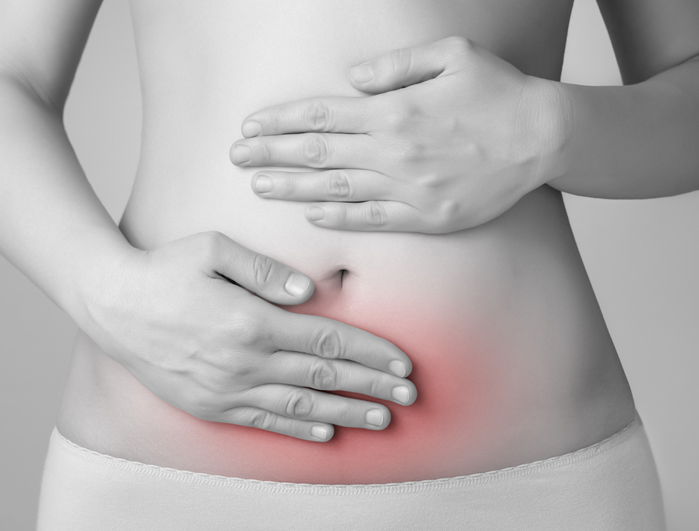What Causes PID?
Most cases are caused by sexual transmission from one person to another (men can carry the viruses and bacteria which cause PID). PID occurs when bacteria move upward from a woman's vagina or cervix (opening to the uterus) into her reproductive organs. A lot of different organisms can cause PID, but many cases are associated with Gonorrhoea and Chlamydia, two very common bacterial STDs. A prior episode of PID increases the risk of another episode because the reproductive organs may be damaged during the initial infection.
Sexually active women in their childbearing years are most at risk, and those under age 25 are more likely to develop PID than those older than 25. This is because the cervix of teenage girls and young women is not fully matured, increasing their susceptibility to the STDs that are linked to PID.
The more sexual partners a woman has, the greater her risk of developing PID. Also, a woman whose partner has more than one sexual partner is at greater risk of developing PID, because of the potential for more exposure to STDs.
Women who have an intrauterine contraceptive device (IUCD) inserted may have a slightly increased risk of PID near the time of insertion compared with women using other contraceptives or no contraceptive at all. However, this risk is greatly reduced if a woman is tested and, if necessary, treated for STDs before an IUCD is inserted.
Infections which cause PID may also get in to the pelvic cavity during childbirth, miscarriage or abortion, as the cervix is dilated (opened).
Symptoms
Often PID can be asymptomatic, meaning there are no symptoms. It can be an acute (sudden and severe) or chronic (long-term) infection.
Symptoms of acute PID can include:
-
Severe abdominal pain
-
Nausea vomiting and dizziness
-
High temperature
-
Pain while passing urine
-
Unpleasant vaginal discharge
-
Pain during and/or after sexual intercourse
Symptoms of chronic PID include:
-
Constant abdominal pain or discomfort
-
Possible infertility
Complications
Without treatment, PID can cause permanent damage to the female reproductive organs. Infection-causing bacteria can invade the fallopian tubes, causing normal tissue to turn into scar tissue. This scar tissue blocks or interrupts the normal movement of eggs into the uterus. If the fallopian tubes are totally blocked by scar tissue, sperm cannot fertilize an egg, and the woman becomes infertile. Infertility also can occur if the fallopian tubes are partially blocked or even slightly damaged. About one in eight women with PID becomes infertile, and if a woman has multiple episodes of PID, her chances of becoming infertile increase.
In addition, a partially blocked or slightly damaged fallopian tube may cause a fertilized egg to remain in the fallopian tube. If this fertilized egg begins to grow in the tube, it is called an ectopic pregnancy. As it grows, an ectopic pregnancy can rupture the fallopian tube causing severe pain, internal bleeding, and even death.
Scarring in the fallopian tubes and other pelvic structures can also cause chronic pelvic pain (pain that lasts for months or even years). Women with repeated episodes of PID are more likely to suffer infertility, ectopic pregnancy, or chronic pelvic pain.
Diagnosis
PID is difficult to diagnose because the symptoms are often subtle and mild. Because there are no precise tests for PID, a diagnosis is usually based on clinical findings. If symptoms such as lower abdominal pain are present, the doctor should perform a physical examination to determine the nature and location of the pain and check for fever, abnormal vaginal or cervical discharge, and for evidence of gonorrhoeal or chlamydial infection. If the findings suggest PID, treatment is necessary.
A pelvic ultrasound may also be used for diagnosing PID. An ultrasound can view the pelvic area to see whether the fallopian tubes are enlarged or whether an abscess is present. In some cases, a laparoscopy may be necessary to confirm the diagnosis. A laparoscopy is a minor surgical procedure in which a thin, flexible tube with a lighted end (laparoscope) is inserted through a small incision in the lower abdomen. This procedure enables the doctor to view the internal pelvic organs and to take specimens if needed.
Treatment
PID can be cured with several types of antibiotics; however antibiotic treatment does not reverse any damage that has already occurred to the reproductive organs. Prompt antibiotic treatment can prevent severe damage to reproductive organs. The longer a woman delays treatment for PID, the more likely she is to become infertile or to have a future ectopic pregnancy because of damage to the fallopian tubes.
Because of the difficulty in identifying organisms infecting the reproductive organs and because more than one organism may be responsible for an episode of PID, PID is usually treated with at least two antibiotics that are effective against a wide range of infectious agents. Analgesia (pain killers) is also prescribed to relieve pain.
Rarely, surgery may be required. This could be to drain an abscess, or to help restore normal pelvic architecture and fertility. In severe cases of chronic PID, a hysterectomy (removal of uterus) and/or salpingectomy (removal of fallopian tube) may be the only successful long-term treatment.
In addition, a woman's sexual partner(s) should be treated with antibiotics to decrease the risk of re-infection, even if the partner(s) has no symptoms.



